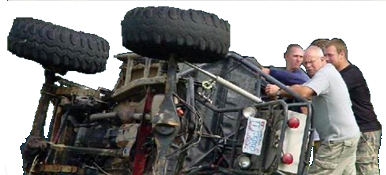- Joined
- Mar 20, 2005
- Location
- Hendersonville, NC
Big thanks to @shawn for some help diagnosing this issue. Once I clean 3" of Harlan mud off my chassis, I will do some testing. Until then...
On my Ranger, when using the winch (although I RARELY have to ) my engine will nearly immediately die. If using the winch under no load it will die unless I rev it up over 2k. Under load, it will immediately stall. Regardless, it always re-cranks just fine.
) my engine will nearly immediately die. If using the winch under no load it will die unless I rev it up over 2k. Under load, it will immediately stall. Regardless, it always re-cranks just fine.
Here's how things are set up.
Battery is in the bed area. It is a typical Advance Auto battery, nothing fancy. Grounded via cable directly to chassis. The + side goes to a standard disconnect and then up the frame to a junction block where it splits off to the solenoid and also to the winch. That is where my problem lies most likely.
In a perfect world, I would run the winch straight to the battery like most people do, but I would have 2 cables each one 8-10' long. Or would that be a bad thing?
I am going to perform a voltage drop test to see how bad the drop is. So assuming I need new, larger diameter cables (and better routing) what gauge and type of cable would be best? What about cable ends?
Thoughts?
On my Ranger, when using the winch (although I RARELY have to
 ) my engine will nearly immediately die. If using the winch under no load it will die unless I rev it up over 2k. Under load, it will immediately stall. Regardless, it always re-cranks just fine.
) my engine will nearly immediately die. If using the winch under no load it will die unless I rev it up over 2k. Under load, it will immediately stall. Regardless, it always re-cranks just fine.Here's how things are set up.
Battery is in the bed area. It is a typical Advance Auto battery, nothing fancy. Grounded via cable directly to chassis. The + side goes to a standard disconnect and then up the frame to a junction block where it splits off to the solenoid and also to the winch. That is where my problem lies most likely.
In a perfect world, I would run the winch straight to the battery like most people do, but I would have 2 cables each one 8-10' long. Or would that be a bad thing?
I am going to perform a voltage drop test to see how bad the drop is. So assuming I need new, larger diameter cables (and better routing) what gauge and type of cable would be best? What about cable ends?
Thoughts?

